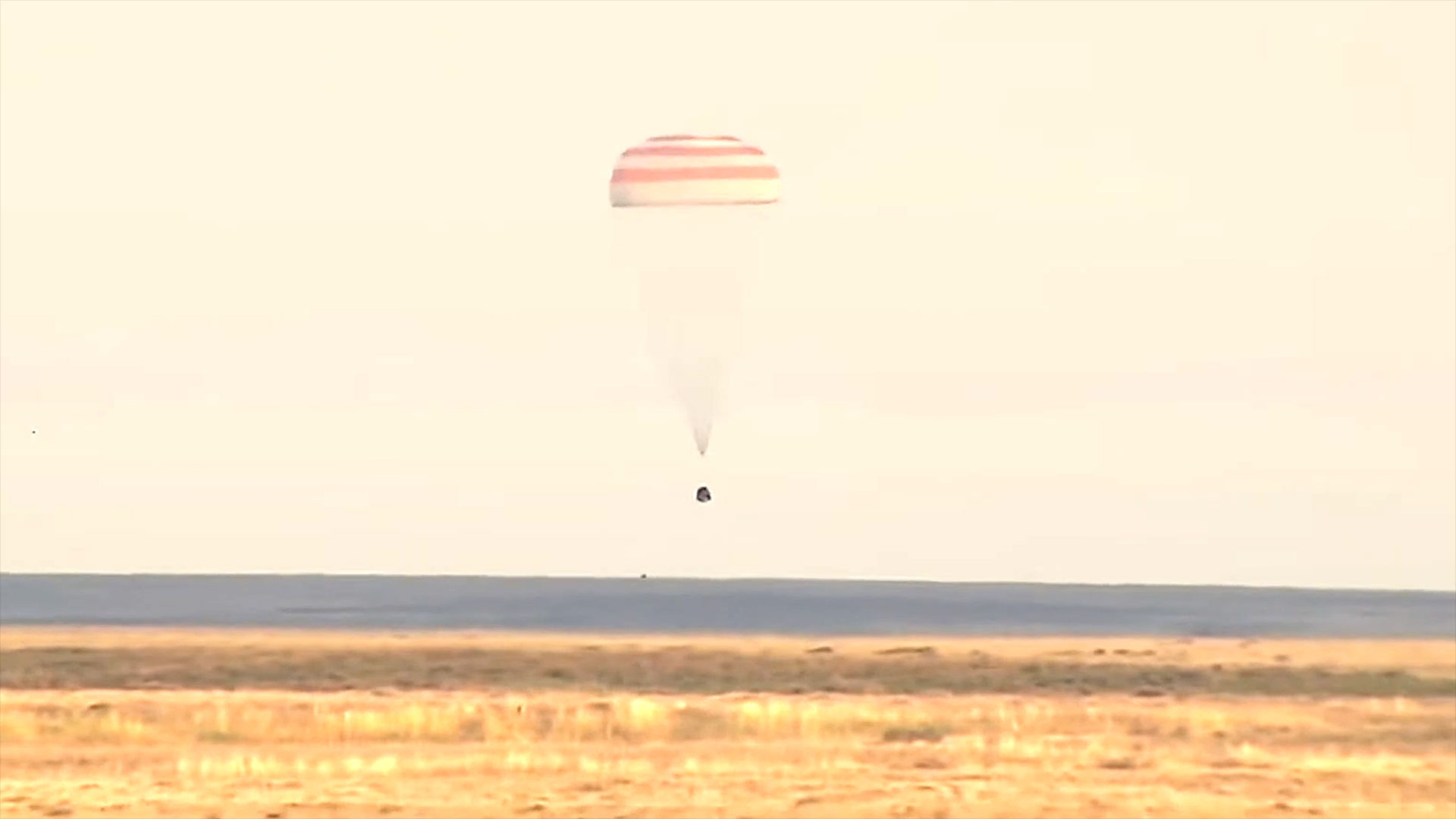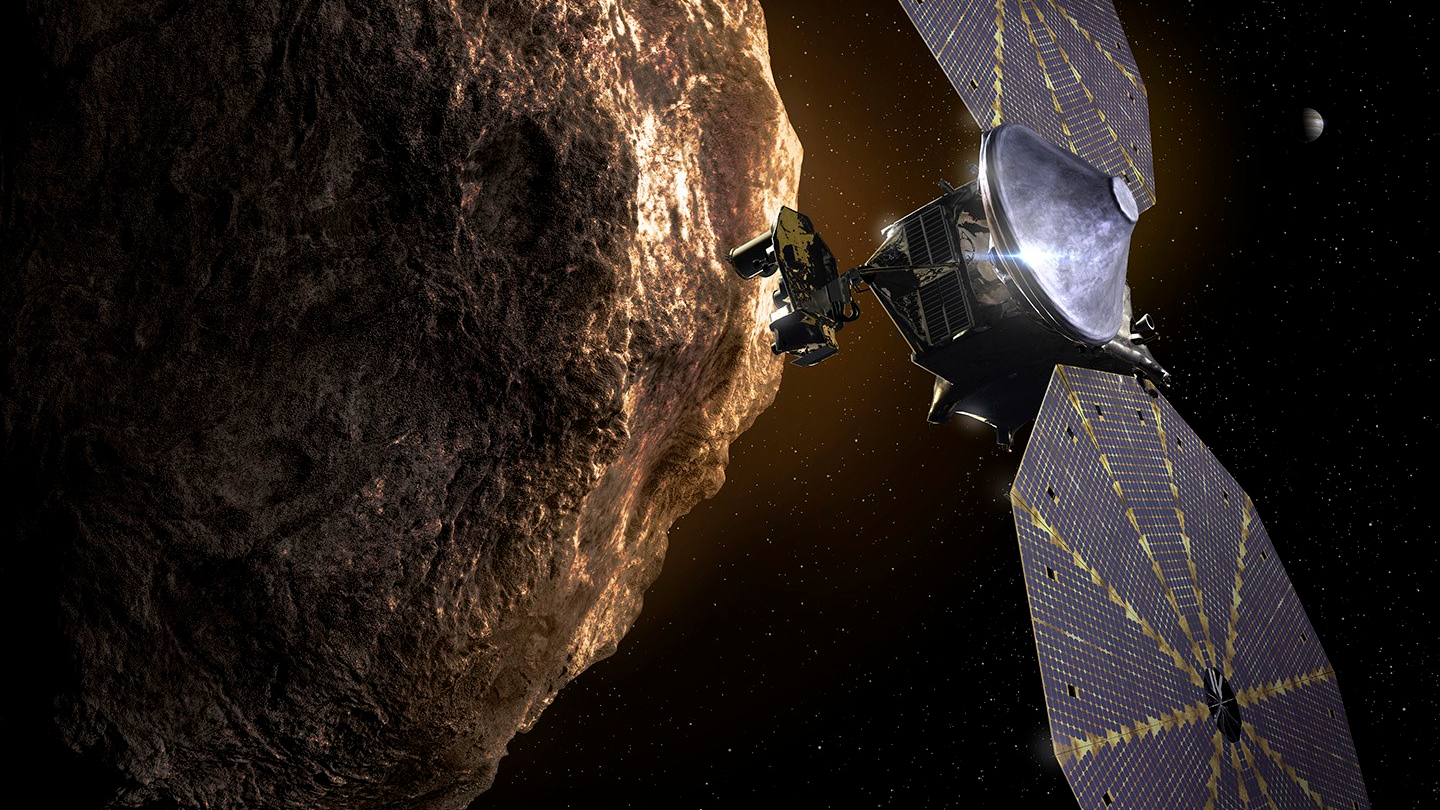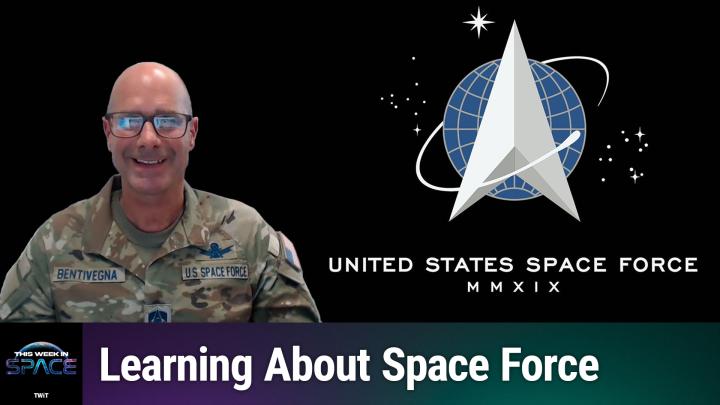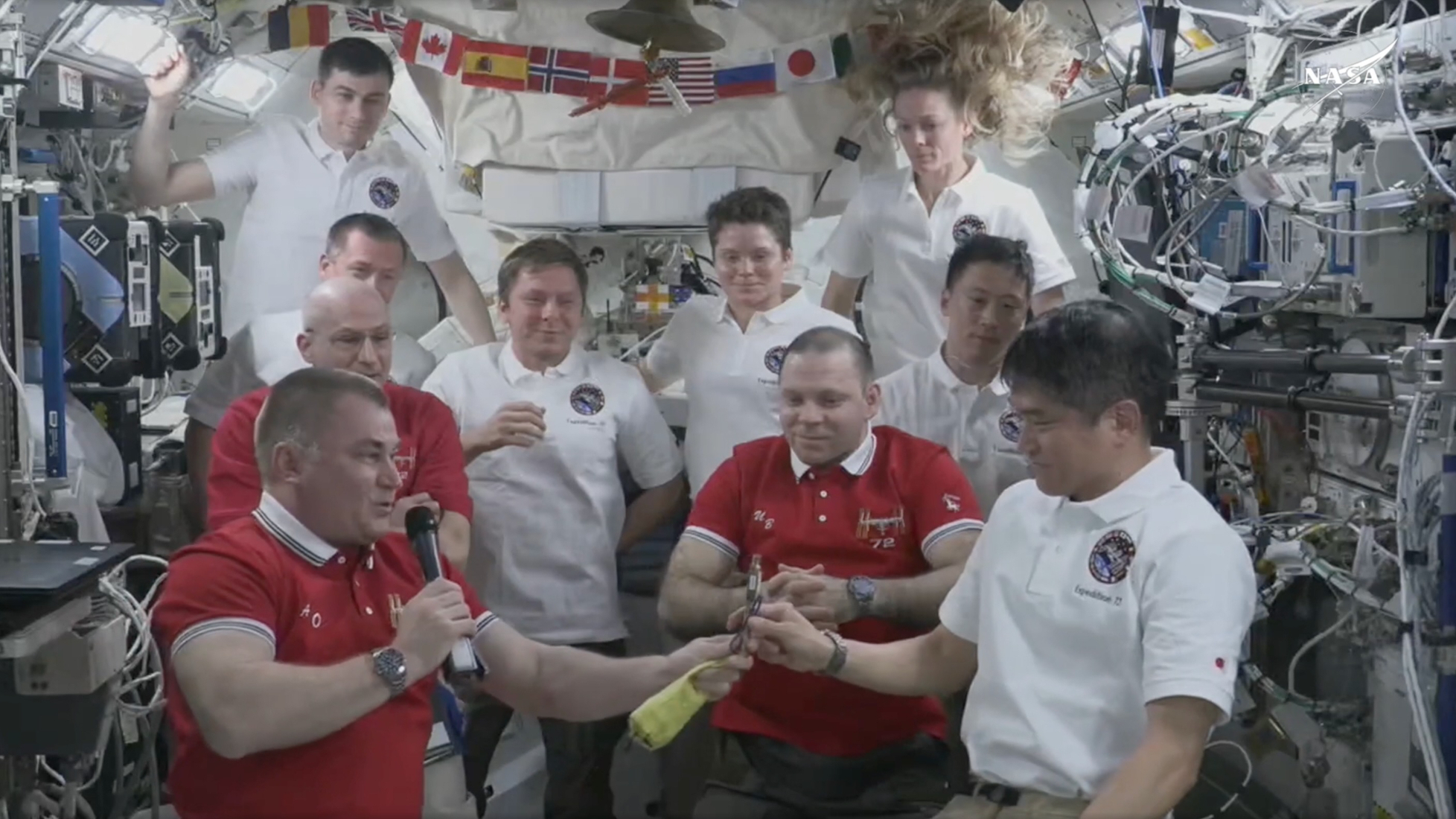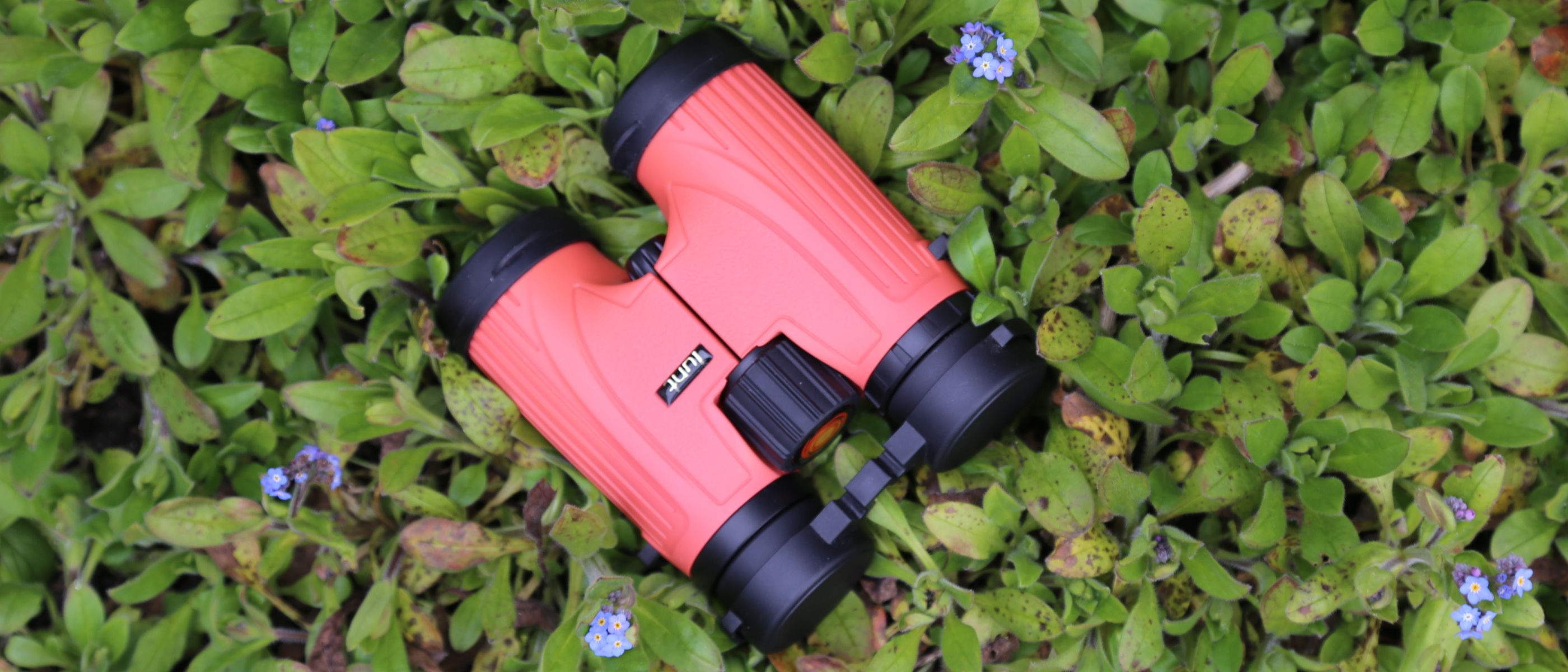Apollo 13 in Real Time website offers new insight into mission, 50 years later
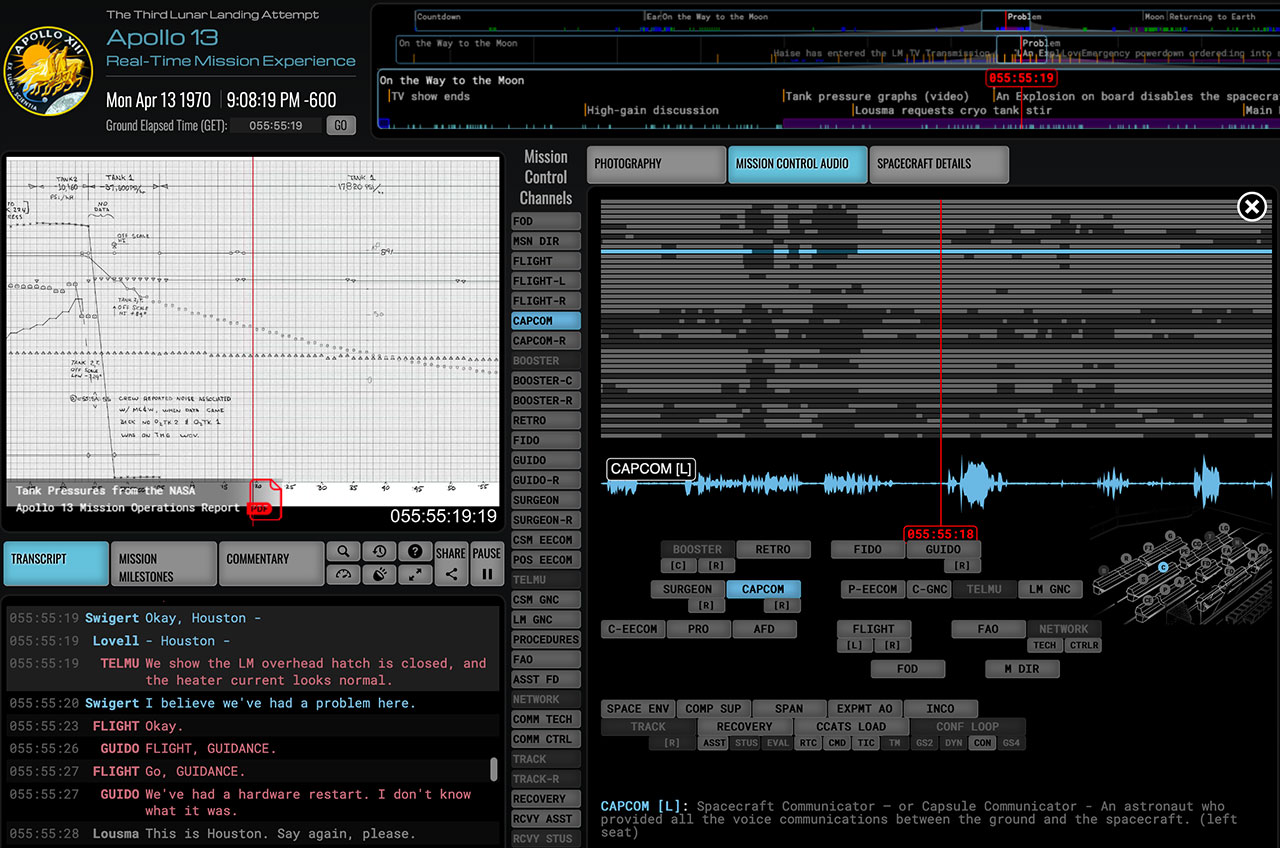
Editor's note: The Apollo 13 in Real Time website here is offering an immersive real-time look at the Apollo 13 mission, which ran from April 11-April 17 in 1970. You can follow the mission in real-time with videos, images, audio and transcripts of the crew, Mission Control and the astronauts and their families. Here's how it was made in our story originally posted March 13.
"I'm naturally concerned. How do things look this morning?"
It is 7:06 a.m. CDT on April 14, 1970. Ten hours earlier, almost to the minute, an explosion on board the Apollo 13 spacecraft ("Houston, we've had a problem") put the mission into peril, threatening the lives of astronauts Jack Swigert, Fred Haise and Jim Lovell.
"My kids aren't up yet and they don't even know what is going on. They went to sleep before all this came up last night. And I was wondering what I could tell them as far as... um, um, in other words, are we really pretty safe right now?"
Related: NASA's Apollo 13 mission of survival in pictures
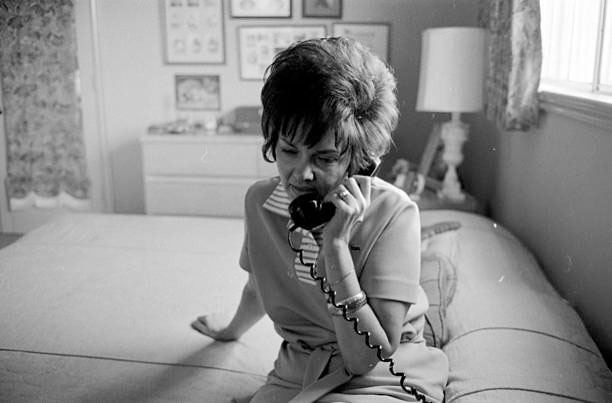
Marilyn Lovell, Jim's Lovell wife, is on the phone with Ken Mattingly, the capsule communicator (capcom) in Mission Control. Were it not for Mattingly being exposed to the German measles less than a week earlier, it would have been him, not Swigert, now aboard Apollo 13.
"We got the first mid-course correction off, which puts them on, they are now on a free return trajectory. I don't know if that happened before you went to bed or not."
Get the Space.com Newsletter
Breaking space news, the latest updates on rocket launches, skywatching events and more!
"Yeah, well, I didn't go to bed until, I think it was 4, and I got up at 5, so I really haven't had much sleep."
That poignant exchange — you can hear the concern and sheer exhaustion in Marilyn Lovell's voice — might read as though it came out of a movie script. But it is real; an example of one of the many never-before-heard conversations that are presented through the Apollo 13 In Real Time website, which launched on Friday (March 13).
The site, like the Apollo 17 and Apollo 11 real-time mission experiences that came before it, is the work of NASA software engineer and historian Ben Feist. Together with a small team of volunteers and funding provided by the space agency, Feist has created the ultimate way to relive every moment of the Apollo 13 mission, 50 years later.
The site incorporates all of the space-to-ground and on board audio; all of the mission control film footage and news pool television transmissions; and all of the flight photography synced to the timeline of when every word was spoken, scene was filmed and image was taken.

"The most important aspect of this website is the included mission control audio that was digitized specifically for this project," said Feist in an interview with collectSPACE.com. "This material has been in the National Archives and hasn't been heard since 1970. It includes recordings of the flight controllers throughout mission control for the entire mission."
Like the 2019 feature-length documentary "Apollo 11," on which Feist also worked, the audio includes the conversations at each mission control console, to and from each flight controller's back room support teams and phone conversations like the one between Mattingly and Marilyn Lovell.
"The last five of these tapes were only recently found and were just digitized at Johnson Space Center this past January," said Feist. "They contain the period of the mission surrounding the on board explosion that disabled the mission and were used as part of the accident investigation in 1970."
"A member of our volunteer team, Jeremy Cooper, wrote a brilliant piece of software that uses data signals on the tapes to measure the severe speed distortions that plagued these recordings. This allowed for the distortion unique to each tape to be corrected out of each digital sample via a proprietary process. The result is stunningly clear audio that is perfectly synced to the original mission time. There is 7,200 hours of this material on the website," Feist said.
Another member of the team, archivist Stephen Slater, then painstakingly matched the audio to the available silent film shot inside Mission Control.
"I used reference points in the room such as mission clocks and console displays to narrow down the possible timeframes," Slater told collectSPACE. "The end result really brings some quite famous Mission Operations Control Room moments to life, some of which had actually been re-enacted for the 1995 movie based purely on the audio."
Also included is commentary from the Apollo Flight Journal and NASA's recently released 4K recreations of what the Apollo 13 crew saw while swinging around the moon based on data from Lunar Reconnaissance Orbiter (LRO).
"Ernie Wright at NASA Goddard Space Flight Center provided us the raw LRO renderings and helped us to time them to mission time," said Feist. "This allows users of the website to see exactly what the crew saw during their loop around the far side of the moon on the exact trajectory they were on, when they were on it, with the lighting exactly as it was on that day in 1970."
It took Feist and his team eight months to compile the multimedia for Apollo 13 in Real Time. Although it has been a rush ("We were late the day we started," said Feist), they also found time to pause and appreciate the history being uncovered by their work — like the phone call between Mattingly and Marilyn Lovell.
"The flight controllers were all on the ball and professional throughout the unexpected and dangerous events that took place on this mission. However, all of the phone calls made from the console to the outside were also recorded and during these more personal moments, you can hear the stress and concern in the controllers' voices," said Feist.
"These human moments are the most surprising and provide an excellent way to calibrate just how excellent everyone was in Mission Control at putting their emotions aside and working the problem."
Click through to collectSPACE to see exclusive examples of the newly-synced audio clips from Apollo 13 in Real Time.
- 'Apollo 13' launching back into theaters for NASA moonshot's 50th anniversary
- Isle of Man marks Apollo 13 50th with new 'One Giant Leap' stamps
- Apollo 13 50th anniversary exhibit to launch new space rental service
Follow collectSPACE.com on Facebook and on Twitter at @collectSPACE. Copyright 2020 collectSPACE.com. All rights reserved.
OFFER: Save at least 56% with our latest magazine deal!
All About Space magazine takes you on an awe-inspiring journey through our solar system and beyond, from the amazing technology and spacecraft that enables humanity to venture into orbit, to the complexities of space science.
Join our Space Forums to keep talking space on the latest missions, night sky and more! And if you have a news tip, correction or comment, let us know at: community@space.com.

Robert Pearlman is a space historian, journalist and the founder and editor of collectSPACE.com, a daily news publication and community devoted to space history with a particular focus on how and where space exploration intersects with pop culture. Pearlman is also a contributing writer for Space.com and co-author of "Space Stations: The Art, Science, and Reality of Working in Space” published by Smithsonian Books in 2018.In 2009, he was inducted into the U.S. Space Camp Hall of Fame in Huntsville, Alabama. In 2021, he was honored by the American Astronautical Society with the Ordway Award for Sustained Excellence in Spaceflight History. In 2023, the National Space Club Florida Committee recognized Pearlman with the Kolcum News and Communications Award for excellence in telling the space story along the Space Coast and throughout the world.


